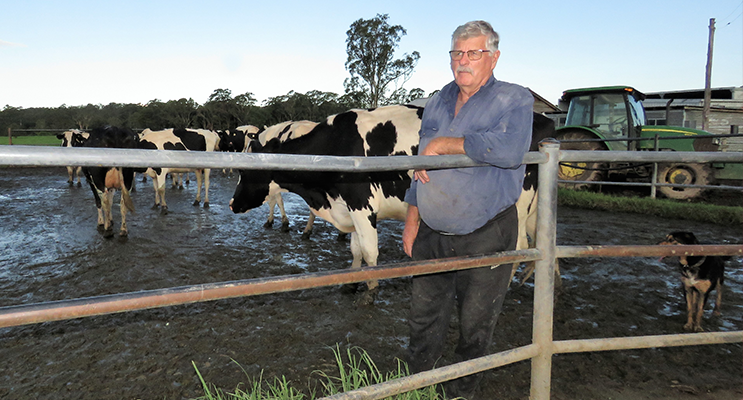
AFTER a drier than average summer, the heavy rainfall last month was a welcome relief for many of the region’s farmers.

Only 51 mms of rain was recorded in Bulahdelah during January this year, but a massive 381 mms was dumped last month, making it the sixth wettest March in more than a century.
The rainfall came at a good time for farmers, but the soggy conditions are now affecting the pastures.
“We had a very hot and dry time from Christmas till the end of February, so we were needing the rain to fill up the water supplies and get the streams flowing and pastures growing,” Markwell dairy farmer John Smith told News Of The Area.
“But we have reached the stage now where everything has become saturated, the pasture declined and the quality of the feed was not enough to sustain body condition and maintain production.”
John said with the combination of a dry summer and wet autumn, supplementary feeding was now needed.
“Grazing is our preferred option, but when that doesn’t happen, we need to give them grain and hay to keep them going, and it becomes a bit more costly of course,” John said.
“The quality of the milk doesn’t change, as long as they are getting sufficient feed, the butterfat and protein levels are maintained.”
John said attention was now focused on preparations for winter feeding before the cold weather hits.
“Summer pastures won’t carry us much past the end of April, so we are trying to sow ryegrass and clover for winter feeding,” he said.
“It’s a bit hard when the paddocks are so wet, but the first of the rain was really good to help prepare for winter, and we have pasture now that will be ready in a few weeks.”
After the soggy month of March, the wet conditions are continuing, with rain recorded on 10 days during the first two weeks of April.
As you can’t change the weather, John said they just have to work around it.
By John SAHYOUN
